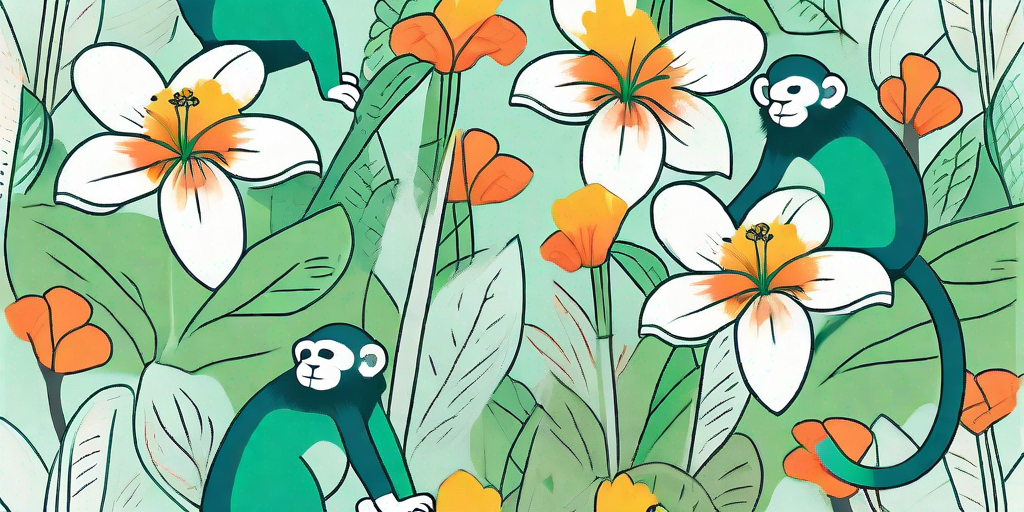
Welcome to the world of monkey flowers, a delightful species of plants that are as playful and intriguing as their name suggests. These vibrant, cheeky flowers, scientifically known as Mimulus, are a joy to cultivate and a sight to behold. So, if you're ready to add a touch of whimsy to your garden, let's dive into the world of monkey flowers.
Understanding Monkey Flowers
Monkey flowers, despite their humorous name, are serious contenders in the world of botany. They belong to the family Phrymaceae and are native to North America. The name 'monkey flower' comes from the blooms' resemblance to a monkey's face, which can be seen when the flower is slightly squeezed or viewed from a certain angle.
These plants are known for their vibrant colors, ranging from bright yellows and oranges to deep reds and purples. They are also quite versatile, with species that thrive in both wet and dry conditions. This makes them a great addition to any garden, regardless of climate.
The Monkey Flower Species
There are over 150 species of monkey flowers, each with its unique characteristics. Some of the most popular include the Mimulus guttatus (common monkey flower), Mimulus ringens (Allegheny monkey flower), and Mimulus cardinalis (scarlet monkey flower).
The common monkey flower is a perennial that loves wet conditions and produces bright yellow flowers. The Allegheny monkey flower, on the other hand, is a taller species that prefers moist soil and produces lavender flowers. The scarlet monkey flower is a showstopper with its striking red-orange blooms and preference for sunny, well-drained soil.
How to Grow Monkey Flowers
Monkey flowers are relatively easy to grow, making them a great choice for both novice and experienced gardeners. Here's a step-by-step guide on how to cultivate these playful plants.
Step 1: Choose the Right Species
As mentioned earlier, there are numerous species of monkey flowers, each with its unique requirements. Choose a species that suits your garden's conditions and your personal preferences.
Step 2: Planting
Monkey flowers can be grown from seeds, cuttings, or transplants. If you're starting from seeds, sow them indoors 6-8 weeks before the last frost date. For cuttings, take a 4-6 inch piece from a healthy plant, remove the lower leaves, and plant it in a pot filled with a mix of peat moss and perlite.
Transplants are the easiest to handle. Simply dig a hole twice the size of the root ball, place the plant in the hole, and fill it with soil. Make sure the top of the root ball is level with the soil surface.
Step 3: Care and Maintenance
Monkey flowers are low-maintenance plants. They require moderate watering, with the soil kept slightly moist. Fertilize them once a month during the growing season for best results. Prune the plants after flowering to encourage new growth and more blooms.
Enjoying Your Monkey Flowers
Once your monkey flowers are in full bloom, it's time to sit back and enjoy their beauty. These plants are not only visually appealing but also attract a variety of pollinators, adding life and movement to your garden.
Monkey flowers also make great cut flowers. Their vibrant colors and unique shape add a touch of whimsy to any floral arrangement. Just remember to change the water regularly and keep the vase out of direct sunlight to prolong the flowers' lifespan.
Frequently Asked Questions
Are monkey flowers perennials or annuals?
Most monkey flowers are perennials, meaning they come back year after year. However, some species are annuals and need to be replanted each year.
Do monkey flowers attract wildlife?
Yes, monkey flowers are known to attract a variety of pollinators, including bees, butterflies, and hummingbirds. This makes them a great choice for wildlife gardens.
Are monkey flowers edible?
While monkey flowers are not typically considered edible, some species have been used by indigenous cultures for medicinal purposes. However, it's always best to consult with a professional before consuming any plant.
Conclusion
Monkey flowers are a delightful addition to any garden. With their vibrant colors, unique shape, and easy maintenance, these plants are sure to bring joy to any gardener. So why not start monkeying around with monkey flowers today?















